Magnificent Microphotography: 50 Tiny Wonders
Worm's Inner World

Flatworms, or planaria, have a network of fine tubules running through their bodies that function much like the kidneys of a mammal. Instead of shunting waste fluids toward the bladder, though, the tubules send it out of the worm's body through pores on the skin.
The tubes accomplish this trick thanks to bulb-like structures called flame cells, which contain cilia that move the fluids out toward the skin.
— Stephanie Pappas
Scintillating Cells
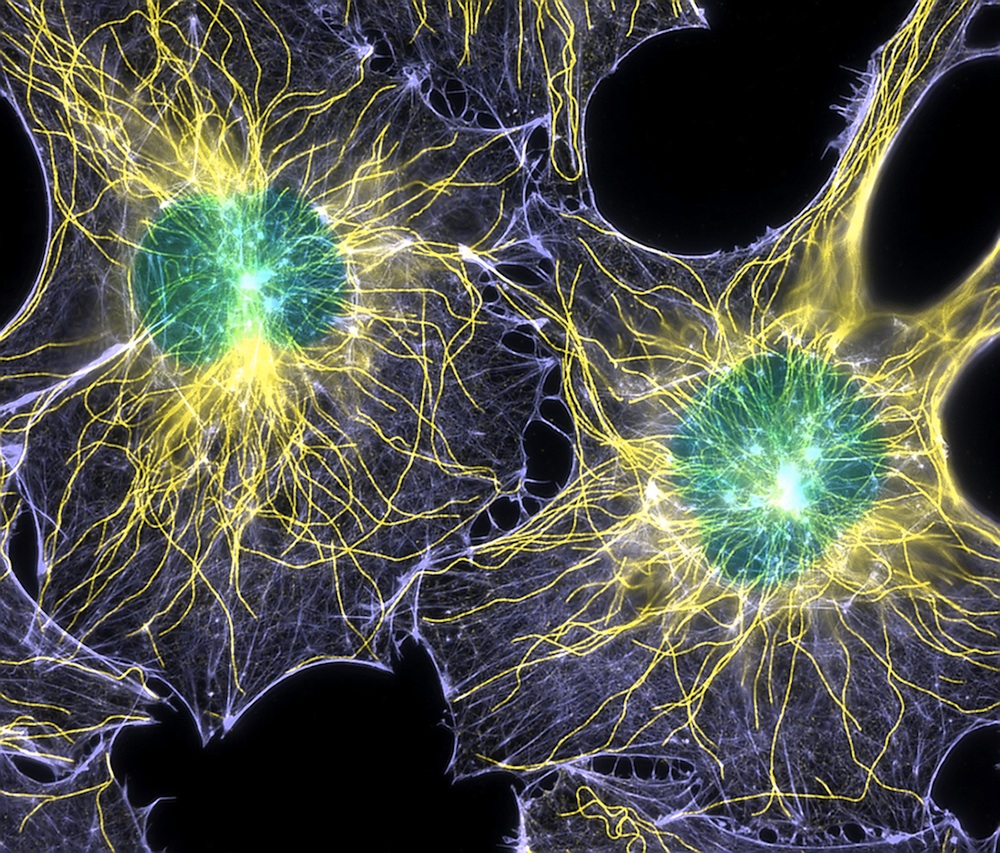
Actin (purple), microtubules (yellow), and nuclei (green) are labeled in these cells by immunofluorescence. This image won first place in the Nikon 2003 Small World photo competition. See some of this year's competition entries here.
— Stephanie Pappas
Amazing Itsy-Bitsy Rainbow

Do you think of algae as gloopy green slime? Think again. This unicellular diatom (Diatom Arachnoidiscus), a type of algae, reveals an intricate rainbow pattern under 40x magnification. The colorful effect is due to the diatom's silica cell wall, which encases the organism like a glassy shell.
Tiny, But Deadly

Like a parasite clinging to a host, the deadly HIV virus buds from a white blood cell grown in the laboratory. The HIV-1 virus, seen here, is the most common (and deadliest) strain of the disease. It infects immune cells like this lymphocyte, causing their deaths and opening the door for opportunistic infections to swoop in.
Miniature Monster
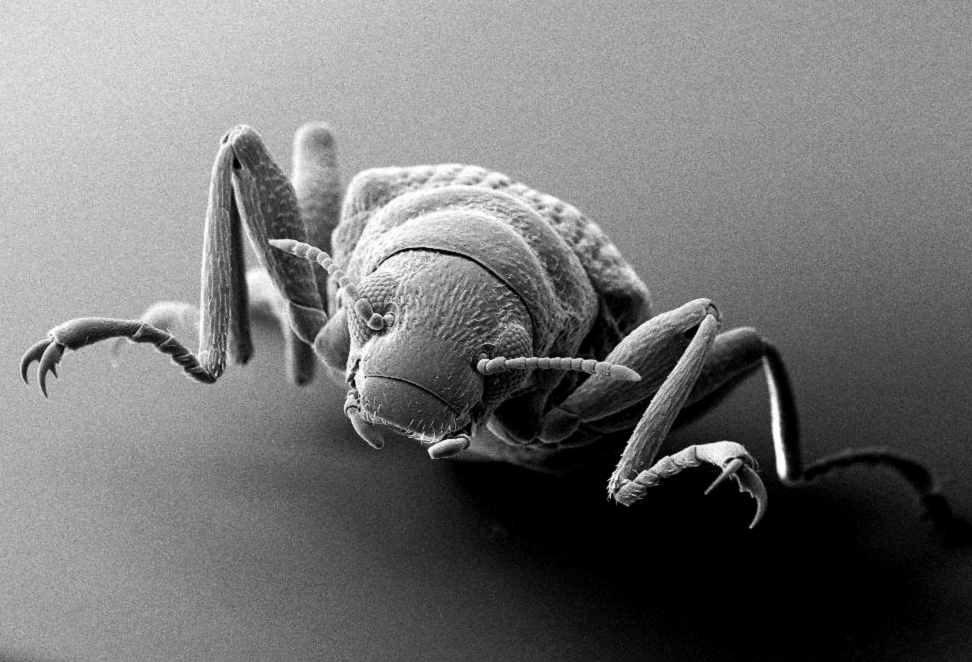
This creepy-crawly is a spider water beetle, a water-loving bug that lives in mountain rivers on Palawan Island in the Philippines. The beetles get their name from their long, spindly legs (imagine if this fellow stretched his out!). They also create their own little scuba-diving bubbles called "plastrons," which allow them to live permanently under the water.
What in the World?
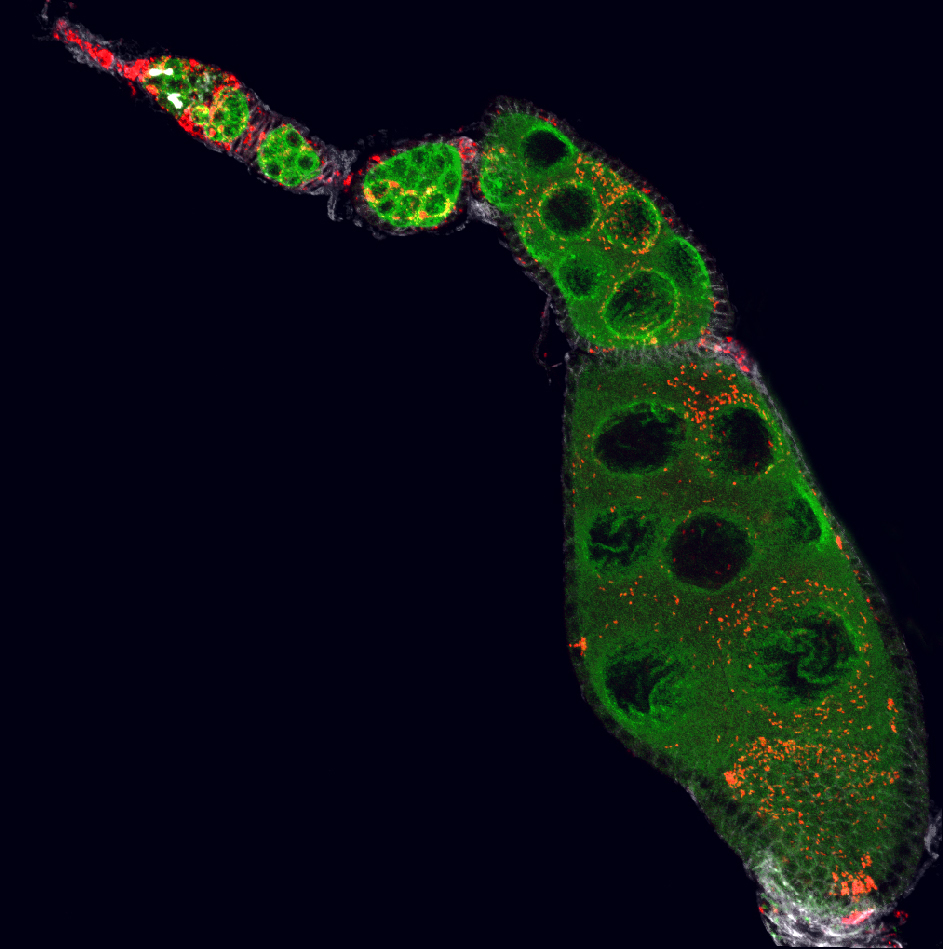
This may look like a terribly wonky Christmas tree, but it's actually a succession of fruit fly egg chambers. The red dots are Wolbachia bacteria, which infect most insect species. The odd thing about a Wolbachia infection is that female insects that carry the bacteria lay four times the eggs as females without an infection.
One reason for this extra fecundity, a new study finds, is that cells divide more readily into gametes (the cells that combine to form offspring, like sperm and egg in humans) in infected female insects. Programmed cell death also drops in developing egg chambers, like those seen in the photograph. Because disease-carrying bugs such as mosquitoes are infected by Wolbachia, researchers hope their results, reported online in Science Oct. 20, will help in developing controls on insect reproduction.
New Age-Defying Trick

Restricting calorie intake has been shown to extend an organism's life span, and now researchers think they know the secret to this age-defying trick. A new study in fruit flies shows that tweaking a gene called PGC-1 in the intestinal stem cells of fruit flies delayed aging of their intestines and extended their life span by as much as 50 percent. Humans also carry that gene.
The researchers speculate that boosting the fruit fly version of PGC-1 stimulates the stem cells that replenish the intestinal tissues, keeping the flies' intestines healthier. The findings, which are detailed in the journal Cell Metabolism, suggest that the fruit fly version of PGC-1 can act as a biological dial for slowing the aging process and might serve as a target for drugs or other therapies to put the breaks on aging and age-related diseases.
(Shown here is a fruit-fly intestine with the different colors representing different cell types; as fruit flies age unregulated stem cell activity and the inability to form cells with specialized functions goes awry.)
Get the world’s most fascinating discoveries delivered straight to your inbox.
Colorful and Cerebral
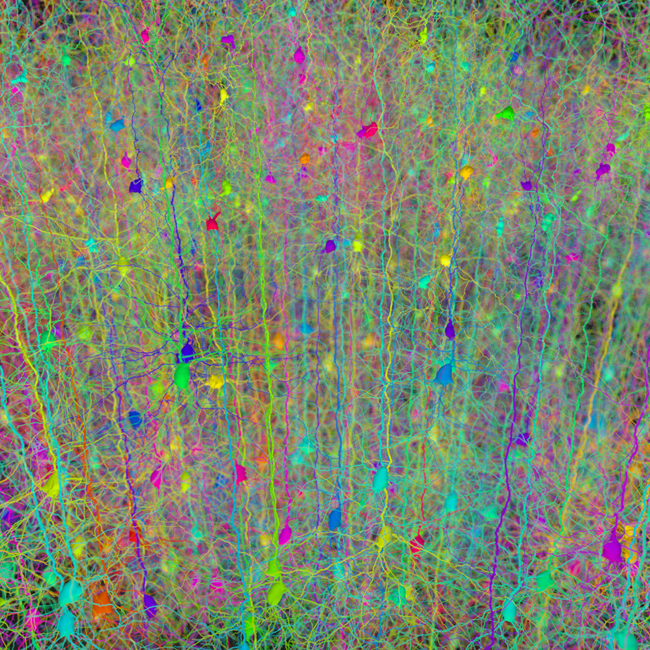
This tangled forest is a false-color representation of the cells that make you who you are: neurons. Brain cells communicate in complex networks, but researchers are getting better and better and unraveling their signals.
Reporting Dec. 12 in the journal Neuron, Norwegian and German scientists say they've used a supercomputer to better understand how the babble of thousands of nerve cells "talking" to one another translates when recorded onto an electrode of the sort used for electroencephalograms (EEGs). This translation effort should make it easier to design brain implants that help control epilepsy, or even enable a paralyzed patient to move his or her limbs with brain waves, the researchers said.
Deadly Gold

This tiny virus has made big news lately, killing a man in southern China and causing a national security scare in the United States. The culprit, shown here in gold? H5N1, or avian flu.
Avian flu rarely jumps from human to human, which is fortunate because the virus kills about 60 percent of people it does infect (they usually get it from close contact with poultry). Researchers from the Netherlands and from Wisconsin caused a stir in December when they published a paper revealing how they'd made avian flu go airborne in ferrets, genetically engineering H5N1 to be highly contagious in mammals. It's likely the strain would work the same way in humans. This research could be important for understanding how the flu virus evolves and if it's likely to become highly transmissible on its own, but U.S. government officials, citing biosecurity fears, convinced the researchers and the journals that published the research to redact key details.
Meanwhile, avian flu flexed its muscles in Shenzhen, China, killing a 39-year-old bus driver and triggering a poultry import ban from that area in Hong Kong. The man was the first human avian flu death in 18 months.
Sewing Cells Together
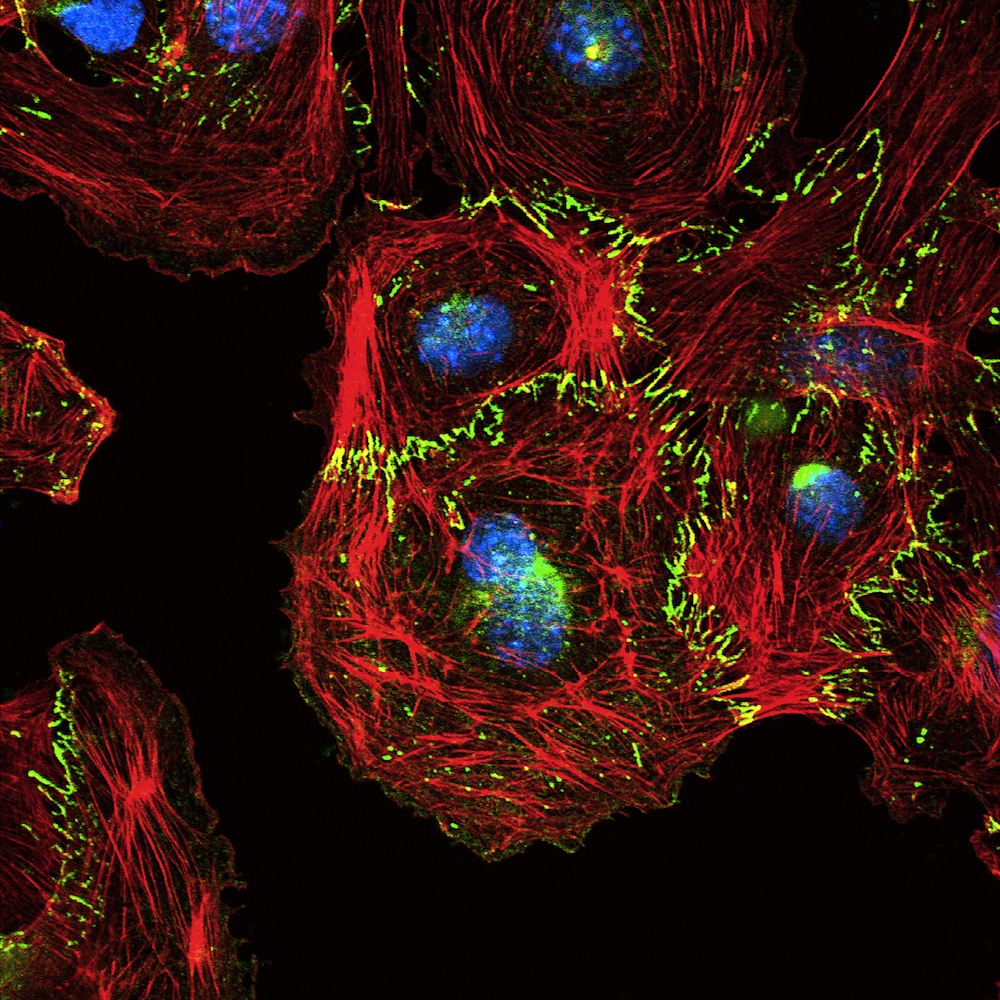
As we grow, our body must build new blood vessels to feed expanding tissues. Now, new research reveals a critical protein that stitches cells together, allowing new pathways for blood to grow. The protein, called Raf-1, allows cells to stick together and migrate as a group. These cell connections are a bit like the story of Goldilocks and the three bears: If the junctions are too loose, the cells break apart. If they're too tight, the cells can't shift and migrate. They have to be just right.
This image shows the beginnings of cell-cell connections between endothelial cells, the type that make up our blood vessel walls. In green, the transmembrane protein VE-Cadherin mediates the formation of cellular junctions. The cells' nuclei are stained blue, while the red is actin, the internal "skeleton" of a cell.

Stephanie Pappas is a contributing writer for Live Science, covering topics ranging from geoscience to archaeology to the human brain and behavior. She was previously a senior writer for Live Science but is now a freelancer based in Denver, Colorado, and regularly contributes to Scientific American and The Monitor, the monthly magazine of the American Psychological Association. Stephanie received a bachelor's degree in psychology from the University of South Carolina and a graduate certificate in science communication from the University of California, Santa Cruz.


